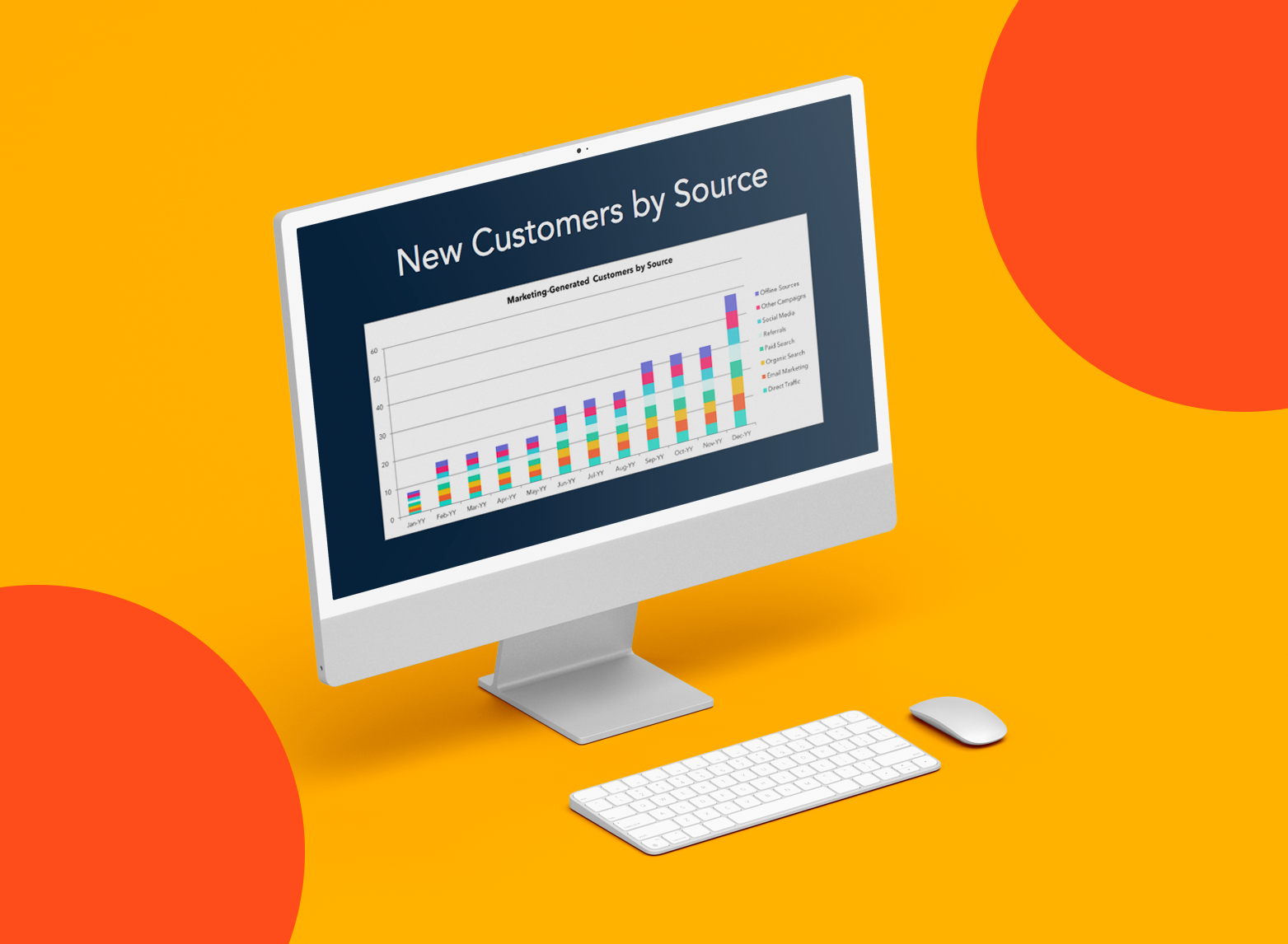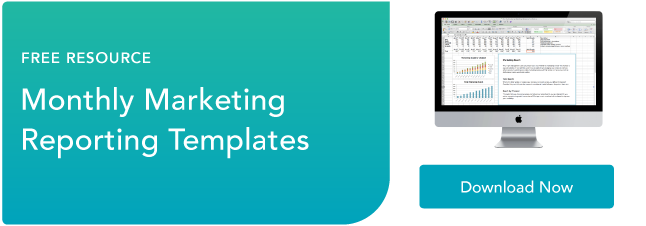Whenever you launch a new marketing campaign, you should test whether the cost of the project is helping or hurting your company. To determine something's profitability, many marketers look at ROI -- or return on investment. At the most basic level, ROI compares the amount of money you spend on a project with the amount of revenue you gain from it.

Ever wonder why we never saw a third sequel to the Jim Carrey classic, Bruce Almighty? One major reason could be the disastrous ROI of 2007's Evan Almighty.
A few years after 2003's Bruce Almighty grossed over $484 million, a sequel was made that starred The Office 's Steve Carell.
In 2007's Evan Almighty, God, played by Morgan Freeman, commands Carell to build an arc like the biblical figure, Noah. The movie's marketing, award-winning cast, and special effects might have seemed promising at the time. But its production costs led to it having the biggest budget of any comedy film at $250 million. After the studio, cast, and crew spent huge amounts of time and money on the film, it only made a dismal $67 million in its first two weeks of release.
In comparison, Bruce Almighty, which had a budget slightly over $80 million, made nearly the same amount in its opening weekend.
While this example looks at ROI on an incredibly large scale, the strategy of measuring your returns can be incredibly helpful to marketers or small businesses as they learn which tactics are and aren't worth repeating.
What's a good ROI in marketing?
The goal of ROI is to make more than a dollar for every dollar you spend on a marketing campaign. What's considered a "good ROI" can vary based on the type of marketing strategy, your distribution channels, and your industry.
Determining one overall marketing ROI benchmark is challenging because all marketing tactics are different.

Marketing Reporting Templates
Excel, PowerPoint, and Google Drive Templates to Make Your Monthly Reporting Faster and Easier
- Track leads.
- Measure CVR.
- Track channel performance.
- And more!
Download Free
All fields are required.

When dealing with an online ad strategy like PPC, where ROI data is usually tracked automatically, you might be able to easily see how your ad's return compares to others that are similar. Platforms like Google Ads also have years of extensive data to back up their reported 800% ROI benchmark.
If you're dealing with other strategies, like content marketing, it might be hard to tell if your blog posts, podcasts, or videos are leading directly to a purchase -- especially when the content isn't on or linked directly to a landing page.
In fact, the Content Marketing Institute says that determining ROI has felt like a mystery to marketers for decades. Although the invention of tracking URLs and other technology has helped to determine the success of content, CMI still suggests looking at ROI from a long-term perspective and factoring in non-financial gains including audience growth.
For most businesses, one good way to set a "good ROI" benchmark for each marketing strategy is to look at the return from similar tactics you've tried in the past, as well as your current sales numbers. That information should help you create ROI benchmarks and goals that are realistic for your company.
When it comes to calculating marketing ROI, here's a simple formula you can follow:
Marketing ROI Formular
[((number of leads x lead-to-customer rate x average sales price) - cost or ad spend) ÷ cost or ad spend] x 100.
To use the marketing ROI formula, you'll need to identify the following things:
- Number of leads: How many people converted to a lead?
- Lead-to-customer rate: What percentage of leads became a customer? If 12 out of 100 leads become a customer, your lead to customer rate would be 12% or 0.12.
- Average sales price: The average price of your product. An average can be helpful if you occasionally apply discounts or alter pricing in other ways.
- Cost or ad spend: How much did you spend on creating and promoting the marketing campaign? Here, you can factor in costs including ad spend, hourly wages of people who put time into the project, or costs related to producing content.
If you're terrible at math, don't worry. HubSpot customers can access an ROI calculator programmed with the same formula in our CRM.
Aside from looking at hard revenue, you might also want to consider other non-financial elements when determining if a marketing strategy is successful. These could include follows or likes on social media, unexpected traffic to your website, or even a sense of increased trust from your customers.
While these things don't offer an immediate financial return, they might indirectly boost purchases or customer relationships later on.
In this post, we'll give you a few tips on how to determine financial ROI for six common marketing strategies. We'll also describe a few fictional small-business marketing scenarios to show you how to use the ROI formula.
Marketing ROI Examples
Written Content
In our 2018 State of Inbound Report, we saw that 82% of marketers who blog see positive ROI in their Inbound Marketing strategy.
Although it might cost less to produce a blog post than a video, written content can still cost you time and money. If blogging is part of your marketing strategy, you'll want to calculate time-related costs, production costs, and promotional costs into your total spend. To translate time into a dollar amount, track the number of hours that an employee spent on the project, then multiply that number by their hourly wage.
For example, if a blogger is paid $20 an hour and takes four hours to write a promotional post, your total cost will be $80 in labor plus any costs related to promoting the post.
If your blog links to a landing page, you'll want to use a tracking URL instead of a basic page URL so you can see how many visitors are coming to the page directly from the blog.
Through tracking visits, leads, and customer conversions related to a blog post or article, you can see how efficient your strategy is. If you're creating content that generates ROI, but realize that writing time is taking too long, you might want to look for ways to streamline that process. If you're not getting ROI, you might want to make other adjustments to your plan or pivot to a new marketing strategy.
Example
A law firm that focuses on housing-related cases wants to gain more clients. They write five blog posts about tenant rights. Each post includes a tracking URL that links to a landing page where prospects can request a free legal consultation.
The firm spent $900 paying employees to draft five blog posts and $100 to promote it. The posts result in eight leads -- four of which become clients. The firm made an average of $2,000 per client.
Here's how their ROI would be calculated:
[((8 x 0.5 x $2,000) - $1,000) ÷ $1,000] x 100 = 700%
If this rate of return works for the firm, they might want to continue the strategy as is. If they like the strategy but want to increase the ROI, they might try creating a video to see if it's more effective or try to churn out posts at a higher frequency.

Marketing Reporting Templates
Excel, PowerPoint, and Google Drive Templates to Make Your Monthly Reporting Faster and Easier
- Track leads.
- Measure CVR.
- Track channel performance.
- And more!
Download Free
All fields are required.

Email Marketing
While some might think email is outdated, it's actually still a key marketing tool. In fact, a business can make $38 dollars for every dollar they spend on an email. Although the ROI may depend on how big a mailing list is, the type of ad in the email, or the audience the email targets, this marketing strategy still might be worth a company's time.
While you might not need to track production time for a linked ad or CTA in an email, you'll still want to be tracking the traffic it drives to your site. Like the written content example above, we suggest using a tracking URL.
Here's an example of how a company might measure ROI of email marketing.
Example
A local dog daycare offers a weekly e-newsletter to customers and those who sign up on their website. An organic dog food company pays them $100 to place an ad that links to a purchasing page for their newest product.
Because the ad is linked with a tracking URL, the dog food company can see that it drove 50 visitors to their product page. Of those visitors, 20 placed the dog food in their cart and 17 purchased it. That ROI formula would look like this:
[((20 x .85 x $20) - $100) ÷ $100] x 100 = 240%
After seeing how much money they gained from the newsletter, the dog food company might continue to place ads in that weekly email. They might also want to branch out to other dog-related emails.
Video Marketing
A whopping 83% of marketers say video gives them strong ROI. But like any type of content marketing, you'll need to spend time and money on producing videos. You might even need to buy or rent film equipment or editing software.
As you script and produce a marketing video, use these tips to film it affordably. You'll also want to keep track of the total cost of labor, equipment, and promotion.
You should be sure to identify ways that you'll measure your video's effectiveness. For example, if you upload a video to social media platforms, you should include a tracking URL in the post caption that leads to the product's landing page. This way, you can see how many visitors were driven to the page because of the video post.
Example
A sales AI software company is launching a new product that automates many menial tasks within the sales process. The company has a landing page for demo signups, but they haven't generated many leads. They think it's because the average sales person isn't understanding what this AI technology can do to help them.
The team decides to make a demo video to show sales reps how the software works and how it can help them cut down on time-consuming tasks. The video is shared on LinkedIn along with a tracking link to the demo signup landing page. The video is also placed on the landing page itself.
It cost the company $300 to buy video supplies and $200 in labor to produce the video. After it was circulated, it resulted in five demo signups which lead to three purchases of the $2,000 product.
Here's their formula:
[((5 x 0.6 x $2,000) - $500) ÷ $500] x 100 = 1,100%
Since they made $1,100, the software company might continue making demo videos. Now that they've already made a one-time purchase of supplies, they also wouldn't need to calculate that cost into ROI of future projects.
Sponsored Content
When a brand doesn't have time or bandwidth to produce their own branded media, they might pay another person, publisher, or company to create sponsored content. While staffing someone outside of your office will cost your company money, you might want to think of the extra hours your team will have to do other productive projects if they don't have to create content.
While you don't need to track labor costs of your own employees, you will want to use the ROI formula to see how the payment for the sponsored content compares to the amount of money you gained from the campaign.
Example:
A boutique wants to promote their new line of summer dresses, but they don't have time or equipment to make a video. They connect with a local fashion influencer and pay her $300 to do an Instagram video titled, "The Best Summer Dresses for 2019."
They tell the influencer to place a tracking URL to the online store in her bio. She also directs viewers to the bio in the video's caption. Through the tracking link, the boutique can see that they've gotten 50 visits. Of those visits, 30 people put an item in their cart. Ten purchased one of the $50 dresses.
They use this formula to calculate their ROI:
[((10 x 0.33 x $50) - $300) ÷ $300] x 100 = -45%
Because they lost money on this, the boutique might want to move away from influencer marketing and invest on in-house strategies.
If they realized they gained more of a social media following, or more traffic than usual, they might still want to continue with the influencer. But to see if they can improve ROI, they might have her post the same video and link on more social platforms to see if gains more traction.

Marketing Reporting Templates
Excel, PowerPoint, and Google Drive Templates to Make Your Monthly Reporting Faster and Easier
- Track leads.
- Measure CVR.
- Track channel performance.
- And more!
Download Free
All fields are required.

PPC Campaigns
With pay-per-click, you're paying for every click your ad gets, even if it doesn't lead to a sale. While Google says its advertisers get a strong ROI, small businesses still waste 25% of their budget on poorly managed PPC campaigns. After your ad is launched, you'll want to closely monitor ROI and wasted spend to learn from and avoid major losses on an ad.
There are a number of tools that can help you monitor and manage live PPC campaigns. You can also use our ROI formula to look at your ad's performance. Here's an example that shows you how:
Example:
An online gardening store wants to use a PPC ad to spread awareness of a new line of luxury lawn mowers -- which cost $1,000 each.
On their first campaign, where the price isn't shown, they spent $1,000. Of the visitors they received, three placed the item in their cart and one made a purchase. In the next campaign, they included the price. They spent a total of $500. Of their web visitors, 12 placed the lawnmower in a cart and seven purchased it.
To see how the PPC ad's script change impacted ROI, the garden store could use the formula for both campaigns. They could count users who carted the product as a lead.
First Campaign: [((3 x .33 x $1,000) - $1,000) ÷ $1,000] x 100 = -$1
Second Campaign: [((12 x .583 x $1,000) - $500) ÷ $500] x 100. = 129.92%
From this comparison, the company is able to see how price transparency can cause more qualified leads to click on the ad. They also might realize that price transparency helps them avoid paying for the clicks of people who can't afford the lawn mower.
Paid Social Media Promotion
If a company has an audience that regularly uses social media, like Facebook, Twitter, or Instagram, they might want to consider boosting one of their posts so it's promoted on newsfeeds of target audiences.
With most social promotions, you'll be able to set a goal or audience target, a time limit, and a budget. Tracking your ROI can help you determine if the social boost strategy is working, as well as the types of posts that lead to the best return.
Example
A lifestyle publication is trying to gain web subscriptions, which cost $10 a month. They decide to offer a one-month free trial to pull in leads. They create a post about the trial for Twitter which includes a tracking URL that leads to the free-trial landing page.
They boost the post for four days with a budget of $25 per day. In the timespan of the posted boost, they'd received 100 visitors and 20 signed up for a free trial. Of the 20, four become paid subscribers.
Here's the calculation:
[((20 x .2 x $10) - $100) ÷ $100] x 100 = -60%
Because the publication lost $60 and still has to honor the free subscriptions they gave out, they might decide to avoid boosting posts on this platform. If they haven't given up on a boosting strategy just yet, they might try paid promotion on another social platform next time.
Best Practices of Measuring Marketing ROI
When it comes to marketing, determining ROI can seem tricky. While more traditional PPC and social media ads can provide more specific rates of return, it can still be challenging to link hard revenue numbers to marketing content like videos and blogs.
Regardless of which marketing strategy you're using, monitoring the following factors can help you determine if your campaigns are really successful:
- Time: How much time did it take to create the marketing materials?
- Production Costs: Track the total cost of supplies, services, and software needed to create the campaign.
- Promotional Costs: Did you spend anything for promotion? If so, add that to your total costs.
- Page Analytics: Use a tracking URL to determine if your content is driving traffic to your product's landing page.
- Non-Financial Returns: Did you gain any social media engagement, unexpected traffic boosts, or other bonuses from your campaign? If so, this could still be helping your level of brand awareness.
For more on content-related ROI, check out this step-by-step guide that offers tips on how to track it and a list of tools that can help you. As you gain more customers, you might also want to check out this infographic that dives into ROI associated with great customer experiences.











